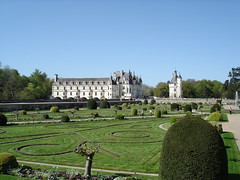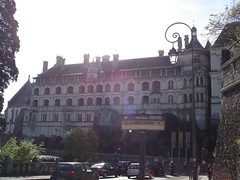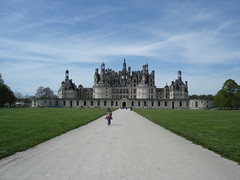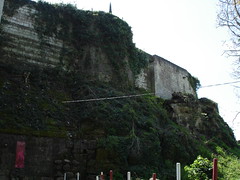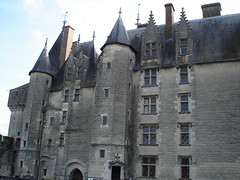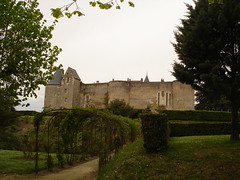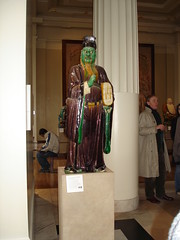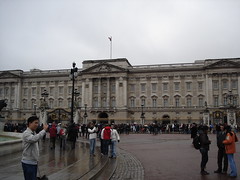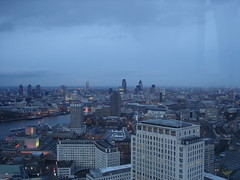Transport
To visit the Loire Valley, you’re better off to stay in one of the big cities, Tours and Blois.
The road from Paris to Tours is quite good. The downside there are many route changes and the itinerary has some toll portions. It will probably take you about 2 hours to get there. Blois is on this route, about 1h30 from Paris.
We have chosen to stay in Tours and get there by TGV. The trip takes little over an hour from Paris Montparnasse and 59 minutes from Massy. Unfortunately there are only a few trains that go in the Tours main station. Most of them stop in a small station on the outskirts of the city, and from there you have to take a regional train. Besides, the trains are a little old. It’s not particularly pleasant to hear the outer shell strongly vibrate at 300km/h.
To get to Blois, and even to Tours if you would like to save some money, you can take some classic trains from Paris Austerlitz. The trip takes about 2h to Blois and 30 more minutes to Tours.
To get around the valley the best is to have a car. If you don’t, you have to get around with local trains (TER) or with local buses. The trains are fast and quite expensive, while the buses are slow, cheap and few and far apart. Be careful, in the weekends the transport sucks (there are fewer trains and no buses).
[rating:3/5]
Accommodation
The Loire Valley has accommodations for all the budgets, from campings and the cheapest hostels to 5***** palaces and even reconverted castles. Tours is in the center of the region so it will probably be your first choice, but Blois has its own charm and nothing compares with the experience you will have if you decide to spend some days in one of the villages in the region.
[rating:4/5]
The castles
I grouped the castles by their region. You should be able to visit all the castles in a group during a single day, without running to much.
Chenonceau and Amboise
Chenonceau and Amboise are placed more or less on the route between Tours and Blois. The first castle I visited, Chenonceau remained my favourite. It was built in the 16th century and it is called „Le chateau des Dames” (The Ladies’ Castle) because it was owned by the wife (Catherine de Medicis) and the mistress (Diane de Poitiers) of the French king Henri II. The castle spreads over the Cher River, so the view is guaranteed from the ball room, which is over 60m long. The domain and the gardens are pretty impressive, although not comparable with the ones at Versailles.
Amboise is different. It was built from an old fortress and the successive kings added new buildings or destroyed old ones, so the current castle is formed from 2 very different wings. This castle gave me a very pleasant surprise, as it was the only one which had a brochure in Romanian. Unfortunately, neither the castle nor the domain were impressive.
Entry fees were 10 euros in full, 7,50 euros for students at each castle.
[rating:4,5/5]
Blois, Chambord et Cheverny
The Blois castle is the most intriguing of them all. It’s made from 3 different wings, of which the most beautiful is unfinished. It has an impressive side on the road and an interesting collection of weapons.
Chambord is arguably the most famous castle of them all. It’s a huge royal palace surrounded by an endless park. The village of Chambord is practically a touristic attraction in itself, being pretty much unchanged from the 17th century. This castle houses the famous double helix staircase, by which 2 people could see each other but never meet.
Tickets for students are 5 euros at Blois and 7,5 at Chambord.
[rating:4.5/5]
Chinon et Langeais
Chinon is more of a fortress than a castle. It’s made of three distinct parts separated by ditches. It’s currently undergoing a huge restauration which will see the main tower rebuilt from scratch. This decision is unfortunate, in my opinion, as it takes most of the charm of the castle. Chinon also has a museum dedicated to Jeanne d’Arc.
Langeais is a small castle not to far from Chinon. It’s the castles where Charles II and Anne de Bretagne married, making Bretagne a part of France. The most interesting thing here is the drawbridge, which is lowered each morning.
[rating:3.5/5]
Luynes et Tours
Luynes is a private residence and can only be visited with a guide. Its charm is given by the small histories told by the guide and the many family pictures. It’s placed in a suburb of Tours and you can get there by bus.
The Tours castle is the city’s art museum. I personally found it totally uninteresting.
[rating:2/5]
Alternatives
Well, there isn’t really an alternative to the many castles in the Loire Valley. Perhaps the English countryside? If you know an area with such a high concentration of castles, please let me know.
[rating:overall]
Links
